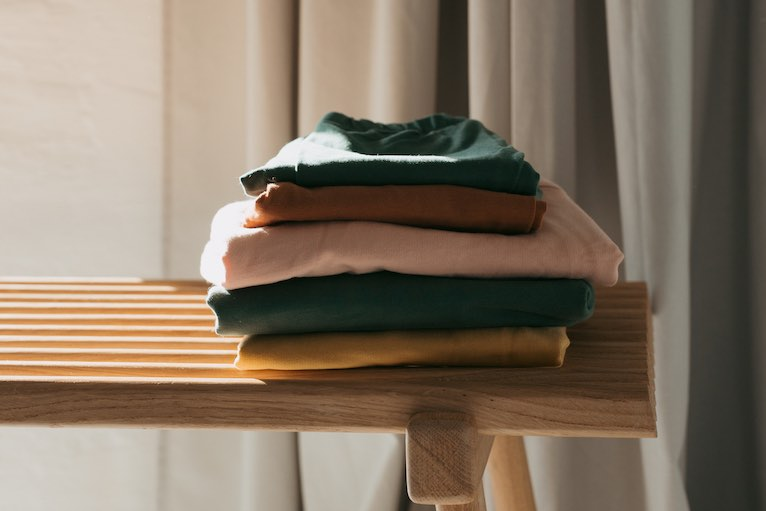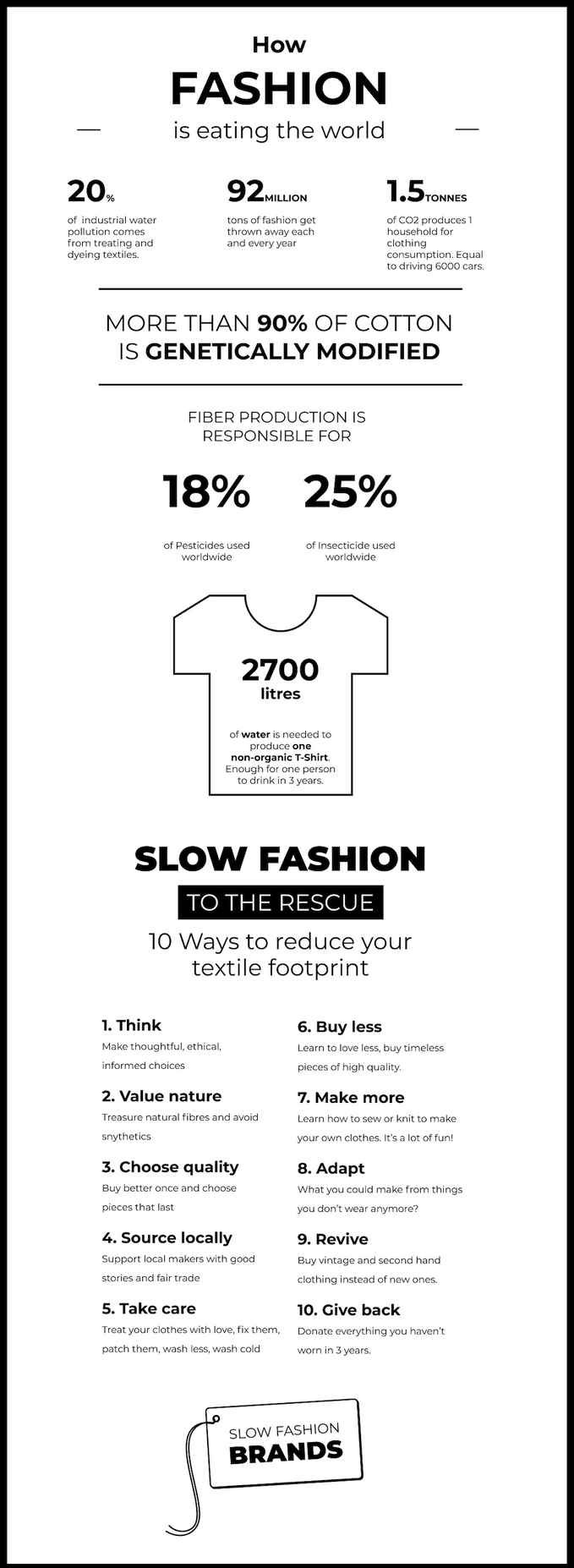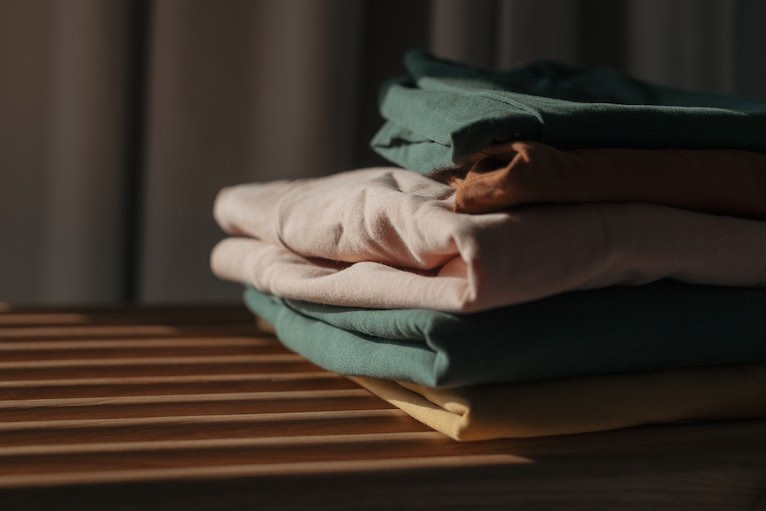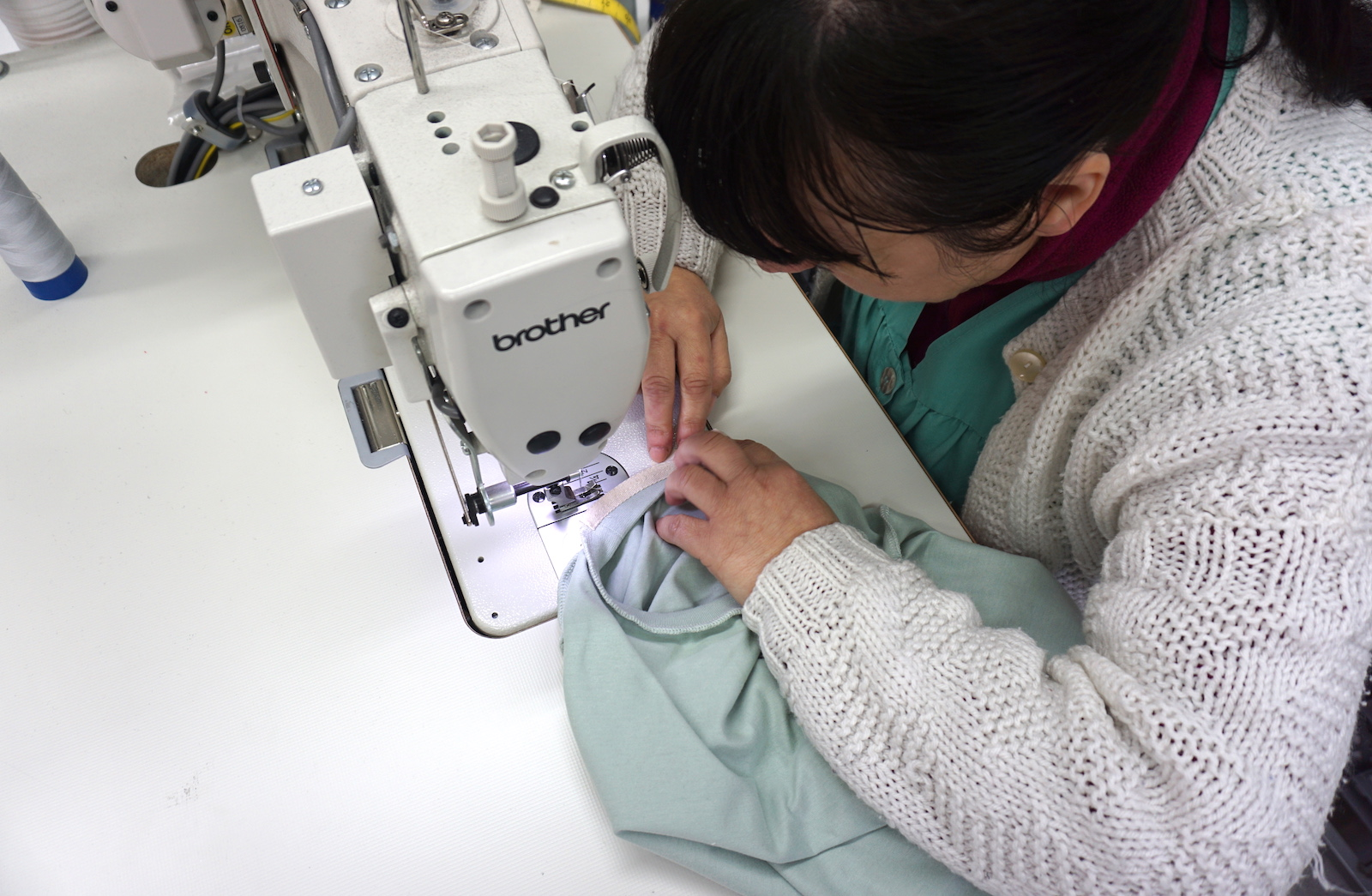Table of Contents
Slow Fashion - Your guide to making your wardrobe sustainable
This page may contain affiliate links. We may earn a commission on purchases, at no additional cost to you. Learn more →
Many of us intuitively know that a big part of the fashion industry is broken. We realize that prices in Fast Fashion stores are too good to be true and that these clothes fall apart again in no time. But it's difficult to know how broken things really are when all we see of the production chain is a nicely ironed T-Shirt in a well-temperatured store.
In this article, we'll unravel the layers of the fashion world, shifting our focus from the superficial allure of Fast Fashion to the deeper, more sustainable ethos of Slow Fashion. We aim to illuminate the stark contrast between these two approaches, revealing the hidden costs of fast fashion and exploring how Slow Fashion offers a more ethical, sustainable, and quality-focused alternative. Join us as we explore the underpinnings of the industry and discover how our choices can lead to a more responsible and conscious fashion future.

What is considered Slow Fashion?
To understand what Slow Fashion is and why it matters so much, we must first look at the harsh reality of its opposite, the Fast Fashion world:
-
92 million tons of fashion get thrown away each and every year
-
The fashion industry emits 10% of global greenhouse gases
-
It takes 2,700 liters of water to produce one non-organic cotton shirt
-
The average fashion worker in Bangladesh (the world's second largest fashion producer) earns only 2-3 $ a day
-
Pesticides and chemicals used in fast fashion production pollute the earth for decades to come

The Answer: Slow Fashion
Simply put, Slow Fashion is the countermovement to the Fast Fashion industry. It is the antidote to using low-quality materials and cheap labor to bring out a never-ending stream of cheap new clothes at a rapid pace. At its essence, Slow Fashion stands for a choice to be more considerate in the way we buy our clothes - that means carefully choosing better-quality clothing and buying fashion less often.
What is Slow Fashion?
The term “Slow Fashion” was coined by the designer Kate Fletcher in 2008, who was inspired by the Slow Food and Slow Living movements where people are more conscious about what they eat and how they live. Slow Fashion brings this movement to the clothing industry. While “ethical”, “sustainable” and “organic” is more a description of how our clothes are made, the idea of Slow Fashion encompasses both producers and customers, who must work hand-in-hand to bring more quality and transparency to the fashion industry.
Even though Slow Fashion is a relatively young phenomenon, it is becoming a global movement with more and more brands choosing transparency and sustainability. It is still small compared to the giant fast fashion industry, but it's strong enough to make a difference!
What are the principles of slow fashion?
Principles of Slow Fashion
-
Quality - Slow Fashion stands for higher-quality and long-lasting clothes that you can happily wear for many washes.
-
Awareness - Slow Fashion is not just about the clothes themselves, but stands for a bigger movement where we pay more attention to how we buy clothes and how we treat our planet.
-
Sustainability - Slow Fashion means producing clothes organically, without any toxic materials and straining our planet's resources as little as possible.
-
Ethics - Slow Fashion is kind to the people who produce it. That means: no child labour, safe and healthy working conditions and fair wages.
-
Natural Methods - The Fast Fashion industry hasn ́t been around forever. Before that, we cared much more about long-lasting and handmade clothes, so Slow Fashion means going back to more natural ways.
-
Economic Sense - If we buy smart and carefully, Slow Fashion actually allows us to save money.

Slow vs. Fast Fashion: A Critical Comparison
The distinction between Slow and Fast Fashion is stark. While Fast Fashion is characterized by rapid production, low costs, and a heavy environmental toll, Slow Fashion advocates for a thoughtful approach towards consumption and production. The Fast Fashion model has led to significant environmental degradation and labor exploitation, a narrative slowly being challenged by the Slow Fashion movement. For further insights, explore the environmental impact of Fast Fashion through documentaries on the subject.
Historical Aspect: The Beginnings of Slow Fashion
Pre-Industrial Revolution Era: Before the advent of industrialization, clothing was predominantly made by hand. Garments were crafted by skilled artisans, tailors, and seamstresses. Clothing was made to order, ensuring a high degree of customization and quality. This period represented the essence of what we now call Slow Fashion - quality over quantity, emphasis on craftsmanship, and sustainable production methods.
Impact of the Industrial Revolution: The Industrial Revolution marked a significant shift in clothing production. The introduction of machines and factory systems in the 18th and 19th centuries led to mass production of garments. This shift made clothing more accessible but also began the move away from the principles of Slow Fashion, as the focus shifted towards quantity and efficiency.
20th Century Consumerism: The 20th century saw an exponential increase in consumerism. The fashion industry responded with even faster production methods, leading to the rise of Fast Fashion. This era was characterized by rapid production, changing trends, and disposable clothing culture, moving further away from the sustainable practices of the past.
Rise of Environmental Awareness: In the late 20th and early 21st centuries, there was a growing awareness of the environmental and social impacts of Fast Fashion. Issues such as pollution, waste, and unfair labor practices led to a call for a more sustainable approach to fashion.
Re-emergence of Slow Fashion Principles: This awareness gave rise to the Slow Fashion movement as we know it today. Influenced by the Slow Food movement, which started in the late 1980s as a reaction against Fast Food, Slow Fashion advocates for a return to the principles of quality, sustainability, and ethical production. Designers like Kate Fletcher in the 2000s played a pivotal role in articulating and promoting these concepts, marking a return to many of the traditional values of pre-industrial clothing production but within a modern context.

Modern Slow Fashion Movement
Today, the Slow Fashion movement is seen as a solution to the pitfalls of Fast Fashion. It emphasizes the need to slow down production, focus on sustainability, support ethical practices, and encourage consumers to value quality and longevity in their clothing choices. It's a movement that doesn't just look to the future for sustainability but also draws heavily from the past, from a time when clothing was made with care, quality, and a respect for the environment.
Join the Slow Fashion Movement
Here are the best things you can do to slow down your fashion consumption and make a meaningful difference:
-
Buy Quality over Quantity
Go for pieces where you know they will last longer, keep their shape and colour.
-
Look under the Hood & Do research
Choose sustainable and ethical whenever you can. Be curious about the clothes you buy. We don't have to become experts, but with a little bit of interest we can much better understand how our clothes are made.
-
Need vs. Want
Shop with intention and make a difference between clothes you need and clothes you want. If you are not sure that you will wear something often, consider holding off the purchase.
Choose items that won't go out of style after a few months and instead, build a wardrobe of timeless classics. That means: more basics and less pieces that don't stand the test of time.
-
Recycle and Repurpose
Get creative with the clothes you already own. Turn long pants into shorts, learn how to stitch or turn your t-shirts into workout shirts.
-
Have kids? Buy gender neutral clothes, so that they can easily be passed on to siblings or friends.
Embracing Slow Fashion doesn't require expert knowledge but a willingness to learn and make informed choices.
Ensuring Brand Sustainability
In the big fashion jungle, it's easy to get lost and difficult to know what brands are really sustainable and what not. Thankfully, there are official fashion certifications that bring transparency into this jungle.
The most important one is GOTS. It covers the entire production process from the making of the fibres to the sewing along carefully selected environmental and social criteria. If you see the green logo on the clothing tag, you can be sure that you are buying an item that is good for the planet and the people who made it. Here is a great list of other certifications that let you know that the brand you are interested in is sustainable.

And one more important thing: Eco-labels certify the production of clothes, but usually not how they are shipped to you. When you shop online, be sure to check if the label uses a CO2-free delivery method.
What are slow brands?
The "slow fashion" model is characterized by a series of defining traits that set it apart from mainstream fashion practices. Brands that adhere to this model typically showcase the following features:
-
Use of High-Quality, Lower-Impact Materials: Slow fashion brands often choose materials that are not only durable but also environmentally friendly. Organic linen is a popular choice due to its lower ecological footprint compared to conventional materials. This choice reflects a commitment to reducing environmental impact while providing quality to the consumer.
-
Timeless Design over Trendy: Slow fashion leans towards creating garments that are classic and enduring rather than chasing fast-changing trends. This approach promotes longevity in clothing use, reducing the need for frequent purchases and, consequently, lessening waste.
-
Localized Retailing: Instead of mass distribution through large chain stores, slow fashion brands often prefer selling their products in smaller, local shops. This approach supports local economies and can reduce the carbon footprint associated with long-distance transportation of goods.
-
Local Sourcing and Production: Emphasizing a localized supply chain, these brands typically source materials and produce their garments within the same region or country. This practice not only supports local industries but also minimizes the environmental impact of transportation.
-
Limited Collections: Contrary to the fast fashion industry, which rolls out numerous collections annually, slow fashion brands tend to release just a few specific styles per collection, sometimes only two or three times a year. Some even maintain a permanent, seasonless collection, which further underscores the principle of timeless fashion over transient trends.
-
Made-to-Order Production: Many slow fashion brands adopt a made-to-order approach, crafting garments only when there is a demand. This method significantly cuts down on waste and excess inventory, aligning with the sustainable ethos of producing only what is necessary.
These characteristics highlight a holistic approach towards fashion that respects both the environment and consumer needs. Slow fashion is not just a style choice; it's a sustainable, ethical, and environmentally conscious approach to clothing production and consumption.

Slow Fashion Brands
Discover our curated list of favorite brands that champion the principles of slow fashion. These brands have integrated sustainability and transparency into the core of their missions, offering stylish and responsibly-made collections:
-
ASKET: Embracing the ethos of slow fashion, ASKET focuses on creating timeless pieces with a commitment to quality and sustainability.
-
LANIUS: Known for its blend of high-quality materials and ethical manufacturing, LANIUS offers a range of fashion that balances style with responsibility.
-
Veja: A Slow Fashion Shoe Brand that stands out for its eco-friendly and ethical approach to footwear, combining trendy designs with sustainable practices.
-
JAN 'N JUNE: As a Slow Fashion Brand, JAN 'N JUNE is dedicated to crafting beautiful slow fashion clothes that are both stylish and responsibly made.
-
Patagonia: A pioneer in the slow fashion movement, Patagonia is renowned for its outdoor clothing that's both environmentally conscious and durable.
-
Reformation: A Slow Fashion Brand known for its luxury slow fashion garments, Reformation combines high-end style with sustainable and ethical production methods.
-
ARMEDANGELS: This brand focuses on creating fashion that's fair, organic, and sustainable, offering a range of clothing that's both stylish and ethically produced.
-
Know the Origin: A brand dedicated to complete transparency, offering sustainably made apparel and advocating for ethical practices in fashion.
-
Orbasics: With a focus on minimalist design and sustainable materials, Orbasics offers non toxic organic cotton essentials that are both comfortable and environmentally friendly.
-
Two Thirds: Committed to the ocean and its preservation, Two Thirds produces clothing with sustainable materials and practices, echoing their deep respect for nature.
-
Wiederbelebt: This brand stands out for its innovative approach to slow fashion, utilizing recycled materials to create fashionable and sustainable garments.
What is Slow Fashion Trend?
Slow Fashion Movement Trends
The Slow Fashion trend represents a significant shift in the sustainable fashion industry towards more sustainable and ethical practices. This movement is marked by several key trends that are reshaping how we view, purchase, and use clothing:
-
Second Hand: The resurgence of second-hand clothing is a pivotal aspect of Slow Fashion. Companies like Sellpy and Thredup are revolutionizing the perception of second-hand clothing, offering stylish and affordable options. This trend not only makes fashion more accessible but also extends the lifecycle of garments, reducing waste.
-
Rentals: The concept of renting clothing, similar to a subscription model like Spotify, is gaining popularity. Platforms such as Rent the Runway enable consumers to rent outfits for specific occasions and return them afterward. This approach minimizes the waste associated with 'one-time wear' and reduces the overall demand for producing new clothing.
-
Customization & 3D Printing: Innovations in technology are bringing customization and efficiency to the forefront. Brands like Eileen Fisher are exploring 3D printing for on-demand, custom clothing production. This technology allows for precise, made-to-order garments, reducing excess production and resource waste.
-
Recycled Clothing: The use of recycled materials in fashion is an expanding trend. Pioneered by brands like Patagonia, which created a jacket from used plastic back in 1993, this practice is now being adopted by other major companies. Many Brands are using materials like ocean plastic to create shoes, jackets, and bags, repurposing waste into valuable products.
But the most important trend of all? Slow Fashion itself! Only if we start shopping more consciously and choosing better quality clothing, instead of giving into the desire for cheap and fast fashion, can the fashion world really change for the better!
So let's check the tag for sustainable labels. Let's get to know the people who make our clothes. Let's ask questions to labels and let's speak to friends. Each one of us really can make a difference to slow down the fast-paced fashion world.
If you enjoyed this post, check out these other articles:
FAQ
Is Slow Fashion Truly Sustainable?
Sustainability is at the heart of Slow Fashion. By reducing waste, using organic materials like organic cotton, and ensuring fair wages and working conditions, Slow Fashion provides a viable alternative to the environmentally damaging practices of Fast Fashion. This shift towards sustainability is not just a trend but a necessary evolution in how we view and consume fashion. To understand more about sustainable practices and about the impact of fast fashion, consider reading about sustainable materials or the benefits of natural fiber clothing.
Is thrifting considered slow fashion?
Yes, thrifting is considered an integral part of the Slow Fashion movement. Thrifting embodies the ethos of Slow Fashion by promoting sustainability, reducing waste and consumption, offering timeless fashion, providing ethical alternatives, and enhancing community engagement. It's a practice that allows consumers to be fashion-conscious while also being environmentally and socially responsible.












